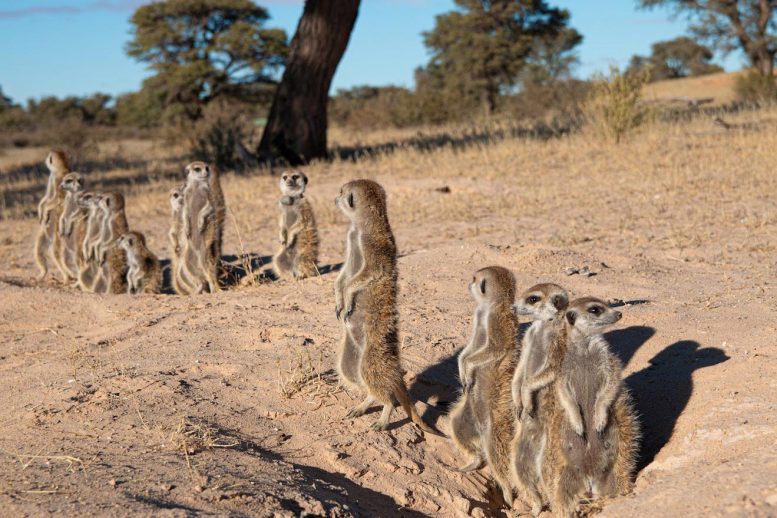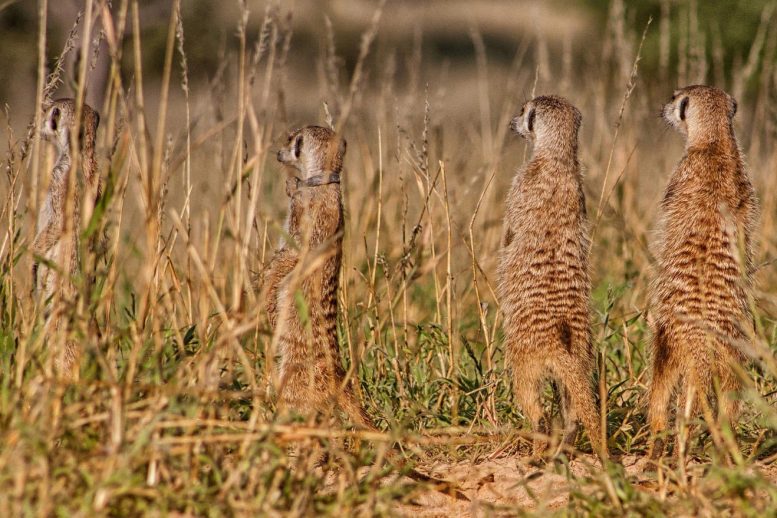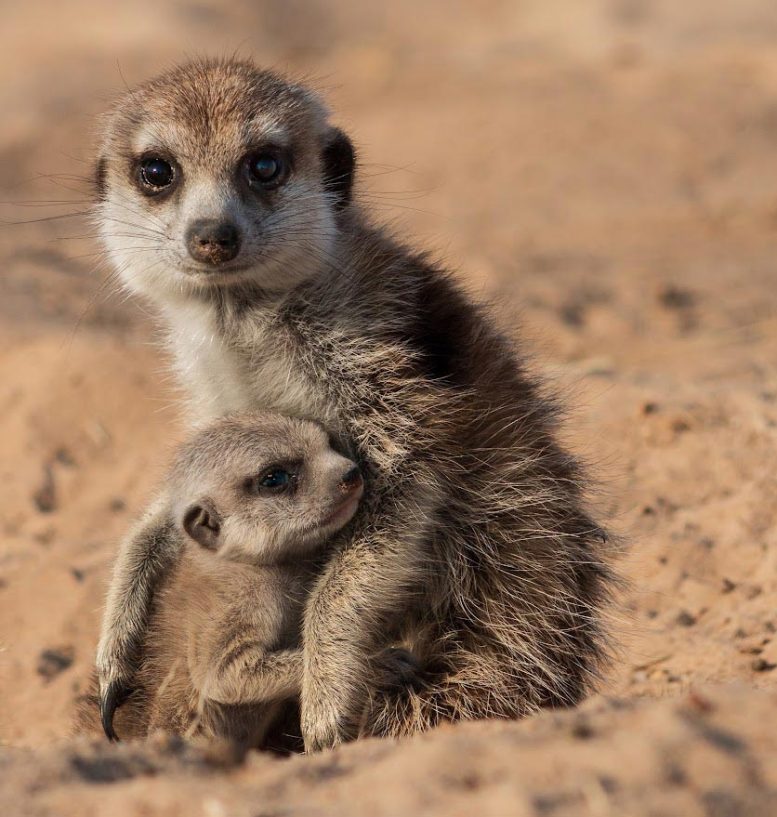Decoding the Sounds of Survival
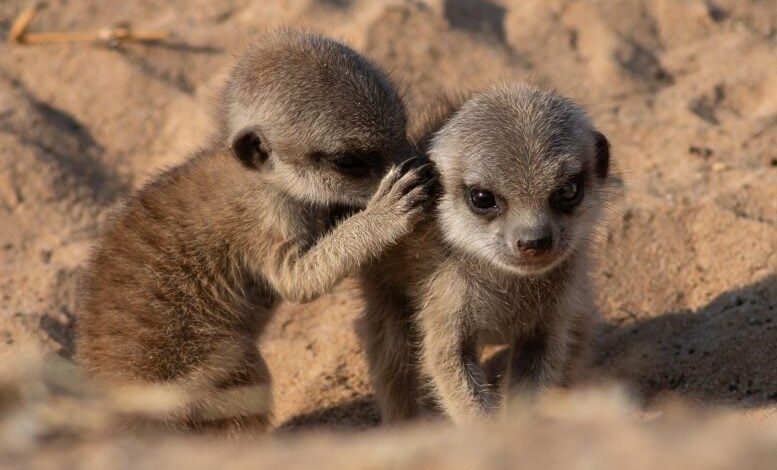
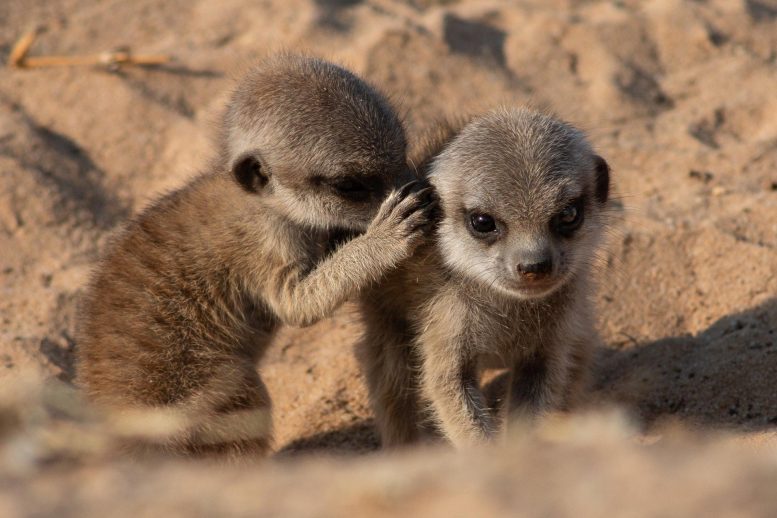
Researchers have discovered that meerkats use two distinct types of vocalizations to communicate: ‘close calls’ for interactive exchanges and ‘short notes’ for broadcasting their presence without expecting a response. These findings, derived from synchronized audio and GPS data, highlight the importance of vocal communication in maintaining group cohesion and safety among meerkats. Credit: Vlad Demartsev
Meerkats use two distinct types of vocal interactions to maintain communication with their group mates. Sometimes their calls simply convey information, while other times, meerkats engage in a call exchange with their neighbors. This behavior was detailed in a recent study conducted by researchers from the Centre for the Advanced Study of Collective Behaviour at the University of Konstanz and the Max Planck Institute of Animal Behavior.
Their findings were published in Philosophical Transactions of the Royal Society B.
Continuous Communication
Meerkats, which are group-living animals, are almost constantly on the move throughout the day. As they are walking or running, they make a continuous series of noises. Researchers have decoded how wild meerkats utilize two of these sounds.
“The first sound, a ‘close call’, is like a call-and-response exchange between the animals. When one meerkat calls, a neighbor is likely to reply,” explains Vlad Demartsev, a postdoctoral researcher from the Cluster of Excellence Collective Behaviour. “Whereas the second call, named a ‘short note’, announces ‘I am here’ but doesn’t necessarily get a direct reply from communication partners.”
Quiz question: Listen to the two calls. Which call do you think will get a reply from a neighbor?
“When one meerkat calls, a neighbor is likely to reply.” What kind of sound are we talking about?
The first call. The second call, known as the ‘short note’, announces ‘I am here’, but does not necessarily receive a direct response from the communication partners.
Vocal Interactions: Exchange vs. Broadcast
Consider an announcement in front of a large crowd where the flow of information is mostly one-way, with no real exchange between the speaker and the audience. “It is impossible to hold a conversation with 20 people, so we normally talk to one partner at a time,” explains Demartsev. Close calls are such an exchange between communication partners and short notes are more like a broadcast or an announcement aimed at the whole group.
Research Methodology
Demartsev, along with Ariana Strandburg-Peshkin and collaborators from the University of Zurich, equipped several groups of meerkats with collars at the Kalahari Research Centre in South Africa. The collars recorded continuous audio data and GPS positions were sampled every second. Using these collars, the researchers got a synchronized recording and could see which animal produced which sound at which time and where.
Analysis of Vocal Interactions
The researchers prepared a vocal timeline for the entire group and analyzed the data. “We saw that when a close call is given, there is a very high probability that within less than half a second a nearby neighbor will respond. But when we have a short note, we do not have this pattern. All of them are calling nearly at the same time and there is no structure,” says Demartsev.
Strandburg-Peshkin adds, “Ultimately, calls are not just single isolated events, but a continuous stream of communication between group members. So, looking at the temporal structure of the interactions can help us to better understand how calls are used and what their function is.”
The Importance of Group Cohesion
Staying in a group is crucial for meerkats and they use multiple mechanisms that evolved to avoid getting separated. “When meerkats are by themselves there is a higher chance of predation or harassment by other groups. Generally, meerkats therefore try very, very hard to stay together,” says Demartsev.
Reference: “Mapping vocal interactions in space and time differentiates signal broadcast versus signal exchange in meerkat groups” by Vlad Demartsev, Baptiste Averly, Lily Johnson-Ulrich, Vivek H. Sridhar, Leonardos Leonardos, Alexander Q. Vining, Mara Thomas, Marta B. Manser and Ariana Strandburg-Peshkin, 1 May 2024, Philosophical Transactions B.
DOI: 10.1098/rstb.2023.0188

